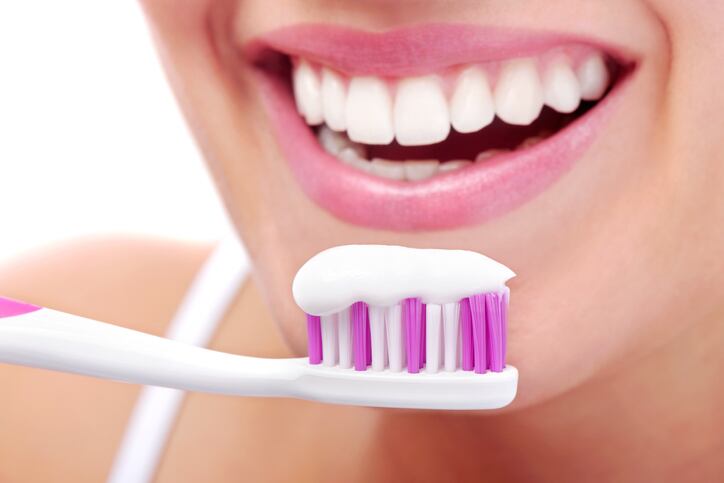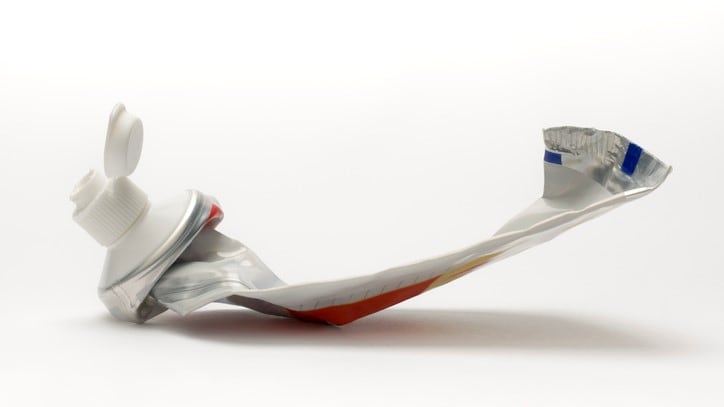In this study analysing 50 toothpaste products sold in UAE, the average fluoride level was 0.193%, which is in excess of the 0.15% level permitted under the current health and safety regulations in the UAE.
“Our study raises concerning questions about the real-life anti-caries effects of the toothpastes sampled here in that the total fluoride concentration of most products did not match the labels’ claims,” researchers from Malaysia and UAE published in Cosmetics.
Fluoride is an important ingredient that has dental caries-preventing properties and is often added into toothpaste and mouthwashes.
However, the excessive intake of fluoridated toothpaste can have adverse side effects, including enamel development in young children
“To the best of our knowledge, ours is the first study to perform an evaluation of fluoridated toothpastes offered on the UAE market,
“The results will contribute to the strengthening of current regulations by showing whether or not they are sufficiently effective while also paving the way for the development of alternative methods in identifying excessive fluoride exposure to safeguard the anti-caries effect while mitigating the risk of dental fluorosis.”
Data collection
A total of 50 toothpaste products were collected from pharmacies, parapharmacies, and health care outlets in UAE and analysed for fluoride using ion chromatography.
In these samples, fluoride was listed either as sodium fluoride (60% of products), potassium nitrate/sodium fluoride (8%), or sodium monofluorophosphate (32%).
The toothpastes were manufactured in the EU (40%), India (24%), Middle East (20%) and Russia (16%).
Findings
In total, the average fluoride content of the 50 samples was 0.193%, which is in excess of the 0.15% level permitted.
Of the 50 products tested, 10 (20%) exceeded the recommended concentration of fluoride, while 12 (24%) had a fluoride concentration lower than declared on their labels.
“These stark disparities in toothpastes concerning their real and declared total fluoride concentrations can lead consumers to over- or under-consume fluoride, both of which have potentially harmful effects.”
Researchers explained one reason for the mismatch between real and declared total fluoride concentration was the presence of abrasive substances that are often included in toothpastes.
Abrasives help remove stains and debris from teeth, and are typically made from calcium or aluminium.
However, in the presence of sodium fluoride, the ions of these abrasive substances are known to reduce the fluoride content. Specifically producing insoluble calcium fluoride, which has no remineralisation nor anti-caries effects.
Other reasons for the discrepancy between declared and actual fluoride concentrations could be due to manufacturing errors in toothpaste production, replacing high-cost ingredients with less costly alternatives, and higher storage temperature, which is known to lead to the instability of the fluoride.
“Fluoridated toothpastes need to be subjected to stricter monitoring and control regarding their safety and quality through good manufacturing practices, education, research, and adverse event reporting.
“The current UAE regulations need to be re-examined in terms of their effectiveness to mitigate the lack of quality control and compliance among manufacturers. The relevant authorities should hereby also ensure that such products are in compliance with the labelling and packaging legislation of the UAE market.”
It was also observed that toothpastes with the active ingredient monofluorophosphate showed higher concentrations of fluoride compared to products with potassium nitrate/sodium fluoride and sodium fluoride.
“This is likely due to the fact that the sampled monofluorophosphate toothpastes used a silica-based abrasive, meaning that the fluoride was in the free ionised form and thus almost entirely available.”
Researchers said the type of fluoride and material of abrasive should be further investigated.
It was also reported that toothpastes claiming to mitigate the pain caused by sensitive teeth tend to show higher concentrations of total fluoride.
“There is a need to reassess the effectiveness of current regulations in the UAE to ensure that all fluoridated toothpastes available on the market are safe and effective for the consumer. Specifically, appropriate guidelines should be established on the basis of the risks and benefits inherent in fluoride exposure.”
Source: Cosmetics
https://doi.org/10.3390/cosmetics8040113
“Analysis of Fluoride Concentration in Toothpastes in the United Arab Emirates: Closing the Gap between Local Regulation and Practice”
Authors: Ammar Abdulrahman Jairoun, et al.




